7 Worst Weeds in Tampa (and How to Get Rid of Them)
BY DANIELLE GORSKI | JULY 31ST, 2019 | FLORIDA, LAWN CARE, TAMPAMost weeds need warm weather to survive, which makes the Tampa Bay area the perfect habitat for weeds, since Florida’s humidity and warm temperatures create ideal conditions for invasive plants. If you’re tired of weeds overtaking your lawn and ready to get rid of them once and for all, here is a guide to the 7 worst weeds in Tampa and how to get rid of them.
In this article, we’ll cover:
- Why Are Weeds Bad for Your Tampa Lawn?
- Ways to Control Weeds in Your Tampa Lawn
- 7 Worst Weeds in Tampa
- FAQs About Worst Tampa Weeds
- When To Call a Lawn Care Pro
Why Are Weeds Bad for Your Tampa Lawn?
No one likes an uninvited guest, and that is exactly what weeds are: an unwanted guest. Not only do weeds ruin the uniform aesthetic beauty of your grass lawn, they threaten the health of your grass, as well.
Weeds cause several lawn issues:
- Weeds steal essential nutrients, water, and sunlight from your grass
- They spread diseases and pests
- The more weeds run wild, the more difficult they are to control or eliminate from your yard
Aside from that, weeds are usually a sign that something is wrong with your yard, such as overwatering or unhealthy grass.
Ways to Control Weeds in Your Tampa Lawn
There are two methods for removing weeds from your Tampa lawn: pulling weeds up by hand or using chemical treatments. Which method works best for your yard depends on the type of weeds you have as well as the size of the weed infestation plaguing your yard.
Hand Weeding
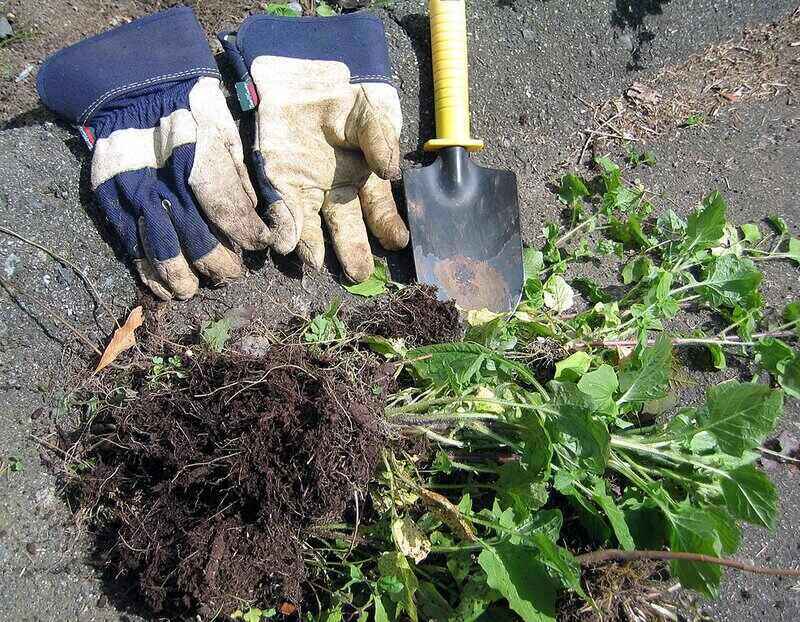
Photo Credit: Ruth Hartnup from Vancouver, Canada / Wikimedia Commons / CC BY 2.0
If you pull weeds by hand, there is weed-removal equipment you can use to help in the process, such as a garden trowel, a hoe, or a screwdriver. The sooner a weed is removed, the easier it is to pull it up before it has a fully developed root system and takes root in the ground.
Be sure to remove the entire weed, including all its roots, tubers, and bulbs. If pieces of the weed are left behind, the weed may grow right back.
For tap roots, try using a screwdriver or dandelion fork to uproot the entire root system.
Weed Control Chemical Treatments
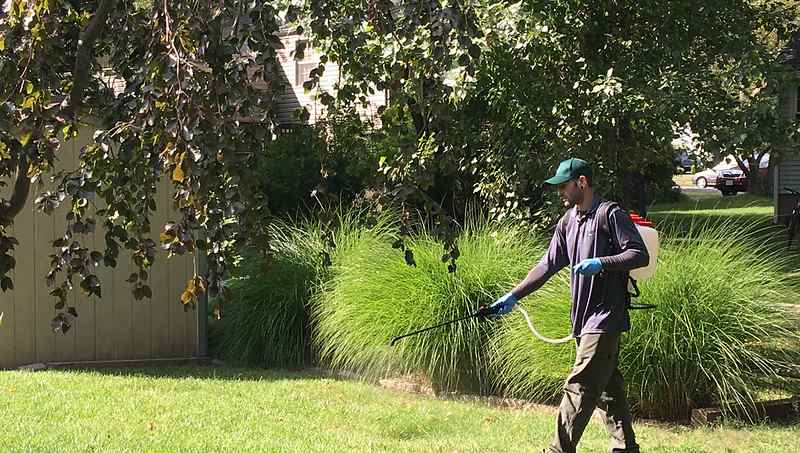
Photo Credit: Praxis Eco Pest Control / Flickr / CC BY 2.0
Sometimes a weed infestation may be too severe to remove by hand. In that case, you might be better off using chemical weed killer treatments to eradicate your weed infestation instead.
- Pre-emergent herbicide. Kills seeds before they germinate, stopping weeds from growing in your lawn.
- Post-emergent herbicide. Kills visible weeds that have already grown.
- Iron-based herbicide. Used specifically for broadleaf weeds.
7 Worst Weeds in Tampa
1. Broadleaf Plantain (Plantago major)
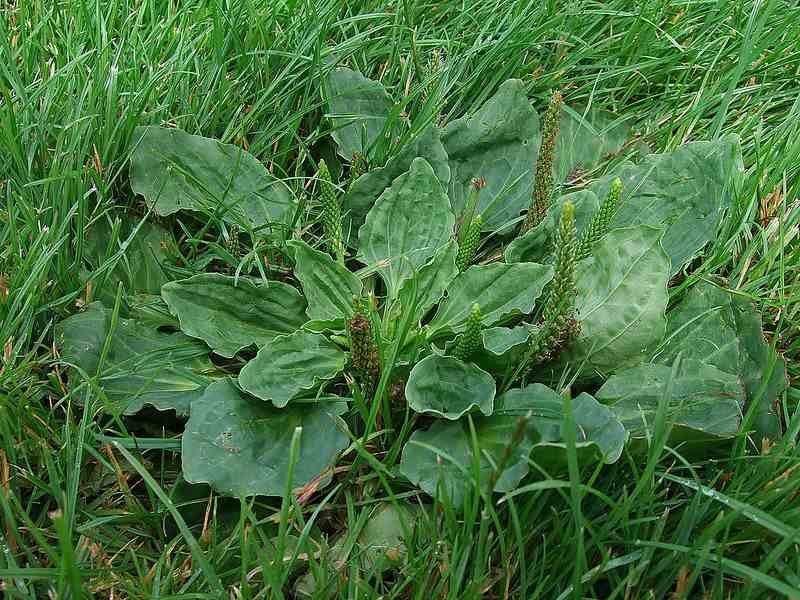
Photo Credit: Simon / Flickr / CC BY 2.0
With a knack for thriving in compacted and soggy soils, broadleaf plantain forms a rosette of broad leaves that can grow up to 6 inches long. Broadleaf plantain is an edible perennial with medicinal properties that can soothe digestive problems, minor burns, or wounds. The weed produces flowers that grow in vertical stalks.
It’s a hardy weed with a tap root system that can endure high levels of foot traffic and grow in sidewalk cracks or other tight spots. Broadleaf plantain needs full or partial sun in order to keep growing. From spring to fall, the weed produces white flowers. The plant is pollinated by wind.
Plant type: Herb
USDA hardiness zone: 3-12
Habitat: Loves cool, moist soil most; works in clay or loamy soil
Danger: None
Removal method: Hand removal, post-emergent or pre-emergent herbicide
2. Common Chickweed (Stellaria media)
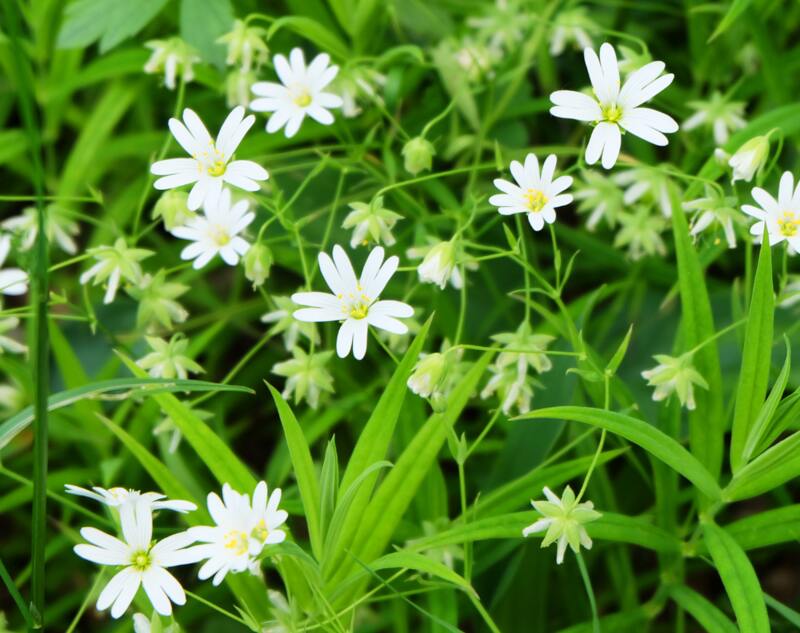
Photo Credit: OllgaP / Canva Pro / License
Small, daisy-like flowers surrounded by oval green leaves growing in your yard may be a sign of common chickweed infesting your lawn. Chickweed grows low to the ground, ducking under lawnmower blades.
A winter annual, common chickweed is an invasive species that thrives in areas that are moist, cool, and shady. Although the flowers may be pretty, chickweed is an invasive spreader, and a single chickweed plant can produce more than 800 seeds.
The best way to get rid of common chickweed is to use herbicides or uproot them by hand. Remember that chickweed has a fibrous root system, so don’t leave traces of the weed behind, otherwise it might grow back.
Plant type: Herb
USDA hardiness zone: 4-11
Habitat: Areas that are moist, cool, and shady
Danger: Although common chickweed is edible, in some cases it might cause an upset stomach if consumed in large quantities
Removal method: Hand removal, pre-emergent herbicides, good lawn maintenance
3. Crabgrass (Digitaria)
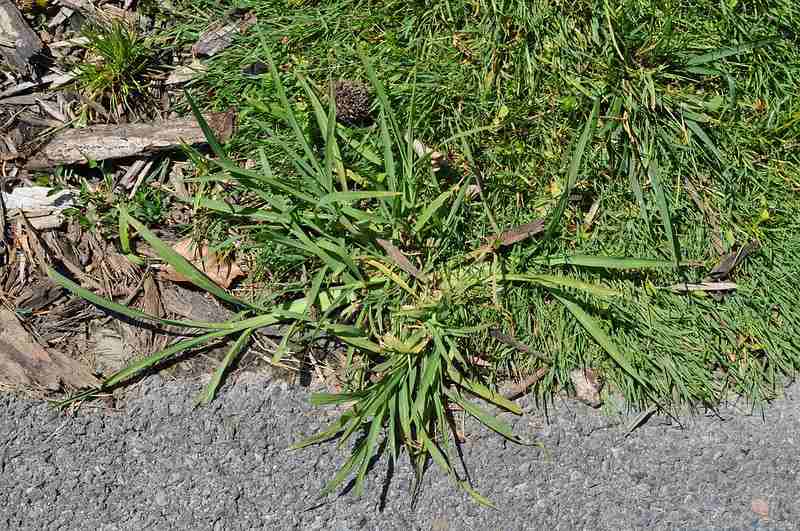
Photo Credit: NY State IPM Program at Cornell University / Flickr / CC BY 2.0
Flat, bright green grass blades shooting out from a central root and tapering to a sharp point are a trademark feature of crabgrass. Crabgrass is a warm-season grass that loves Tampa weather. Its seeds germinate in early spring and summer, and crabgrass tends to pop up wherever there is patchy grass or bare plots of soil.
Crabgrass reproduces rapidly. If left alone too long, you risk the weed spreading seeds all over your lawn. The best treatment for crabgrass is herbicides. Also avoid cutting your grass too low, otherwise it may result in inviting crabgrass to invade your lawn.
Plant type: Annual grass
USDA hardiness zone: 3-11
Habitat: Dry, disturbed soil where the grass is sparse and there are dirt patches for crabgrass to grow in
Danger: None
Removal method: Pre-emergent and post-emergent herbicides, hand removal, routine lawn maintenance
4. Dandelion (Taraxacum officinale)
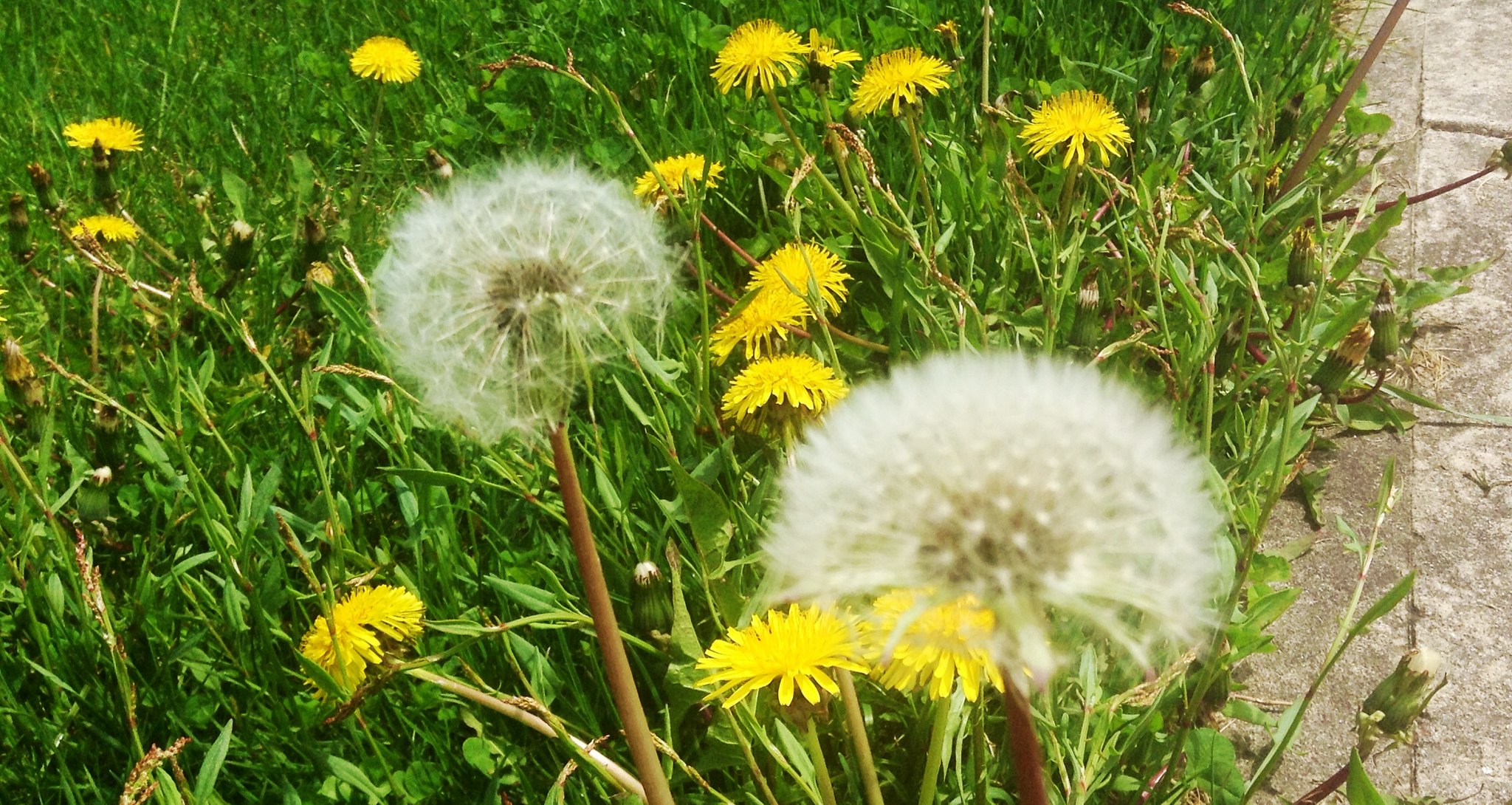
Photo Credit: Mike Mozart / Flickr / CC BY 2.0
One common weed that can be seen across North America is the dandelion. This flowering weed is known for maturing into the white puffballs of seeds you blow on to make a wish, but blow on one of these and you might find yourself getting a weed you hadn’t wished for.
Dandelions blossom in a cheery bright yellow flower of spiky petals stuck on top of a tall, hollow stem. They have jagged dark green leaves. Dandelions are an edible plant that usually sprout up in late spring and summer.
Dandelions are difficult to remove by hand because they have deep tap roots that delve 6-18 inches deep. Post-emergent herbicides can remove dandelions. Keeping your grass dense and healthy with routine lawn maintenance is the best preventative measure against dandelions.
Plant type: Broadleaf perennial
USDA hardiness zone: 3-10
Habitat: Tolerates most soils
Danger: None; dandelions are edible
Removal method: Post-emergent herbicide, hand removal
5. Dollarweed (Hydrocotyle spp.)
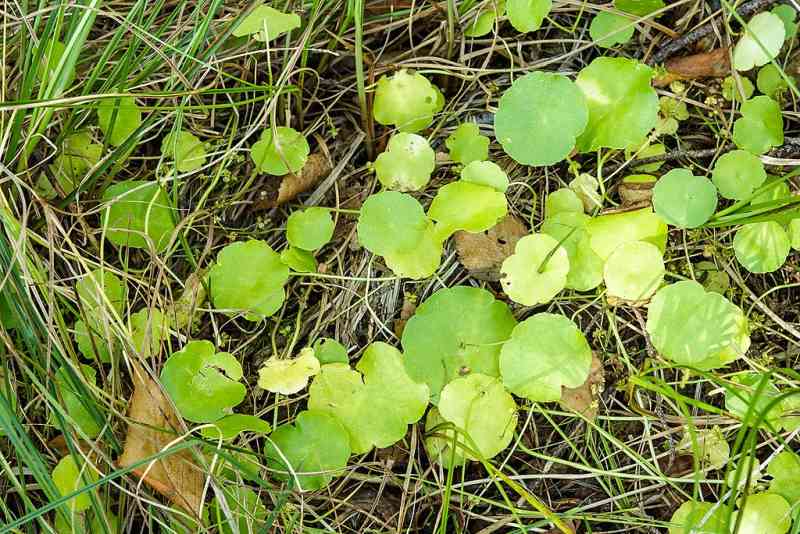
Photo Credit: Dariusz Kowalczyk / Wikimedia Commons / CC BY-SA 4.0
If it looks like a bunch of tiny lily pads infesting your grass, you are dealing with dollarweed. Commonly known as pennywort, dollarweed is a warm-season perennial that thrives in the summer. It is most common in warm states, particularly Florida and Texas.
Dollarweed derives its name from its round green leaves with scalloped edges, which are shaped like a silver dollar. It grows low to the ground and produces little white flowers in July and August.
This water lover has an affinity for moist soils. If you have dollarweed in your yard, it’s a sign you have poor drainage or are overwatering your lawn. To prevent dollarweed from infiltrating your yard:
- Don’t overwater your lawn
- Fix any drainage or irrigation issues in your yard
Plant type: Perennial broadleaf
USDA hardiness zone: 4a-10a
Habitat: Moist soil; tolerates sandy, loamy, clay, acidic, or neutral soil
Danger: None
Removal method: Hand removal, pre-emergent or post-emergent pesticides, proper irrigation
6. Flordia Pusley (Richardia scabra)
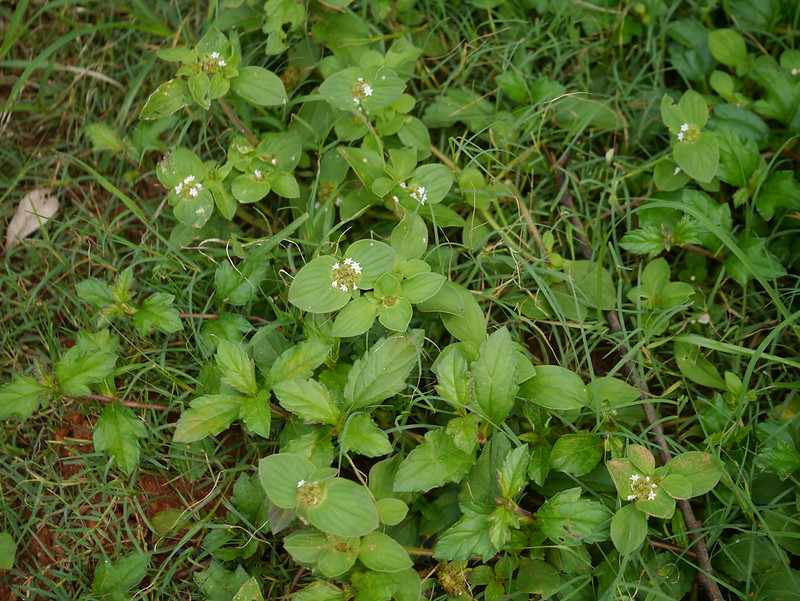
Photo Credit: Dinesh Valke / Flickr / CC BY-SA 2.0
Florida pusley grows in dense patches, making it a challenge to remove by hand. Pusley blooms with snow-white flowers that turn purple as they mature. Their oval-shaped leaves taper to a sharp point at the end. Both stem and leaves are hairy, and all the foliage branches out from a single stem.
Florida pusley is a fast-spreading plant that needs to be dealt with quickly to prevent it from overtaking your lawn. It loves lurking in thin areas among warm-season grasses, the types of grasses most commonly found in Tampa yards.
Drought-resistant and capable of withstanding sub-freezing temperatures, pusley is a durable weed. The summer annual has a shallow tap root system. Florida pusley usually grows in large groups, so the sheer quantity of them makes them difficult and tedious to remove by hand.
Routine lawn maintenance such as regular mowing, watering, and aeration are good practices to keep Florida pusley away. Just be careful not to mow your lawn too short, otherwise it will decrease the lawn’s health and make it more susceptible to a pusley infestation. A large number of Florida pusley weeds in your yard may be an indication of a nematode problem.
Plant type: Broadleaf annual
USDA hardiness zone: 9
Habitat: Sandy soils
Danger: None
Removal method: Hand removal, routine lawn maintenance
7. Goosegrass (Eleusine indica)
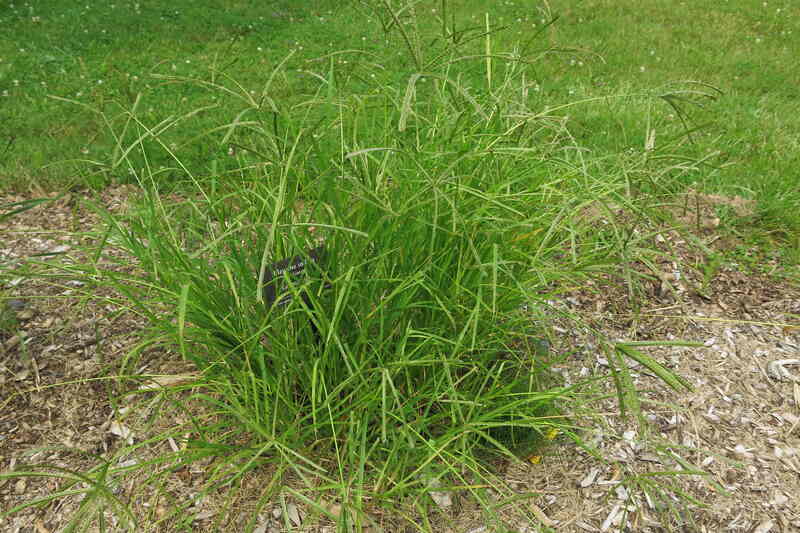
Photo Credit: NY State IPM Program at Cornell University / Flickr / CC BY 2.0
Growing in a haphazard mess of tangly leaves, goosegrass is a low-growing grass-like plant with stems and leaves radiating outward from a pale center, growing more vertically then horizontally. Some homeowners might recognize goosegrass by its other names, wiregrass or crowfootgrass.
Growing in warm regions across the United States, fast-spreading goosegrass can grow up to 12 inches tall if left unattended. Unfortunately, goosegrass thrives in compacted soil and endures high levels of foot traffic, which makes it a tenacious weed capable of withstanding wear and tear.
Homeowners can use herbicides to prevent or kill goosegrass. Routine lawn maintenance and aeration helps prevent goosegrass from appearing in your lawn.
Plant type: Summer annual
USDA hardiness zone: 8-11
Habitat: Compact, wet soils
Danger: None
Removal method: Pre- or post-emergent herbicides
FAQs About Worst Tampa Weeds
For weed management, the University of Florida recommends spraying pre-emergent herbicides around Feb. 1 in South Florida and Feb. 15 in Central Florida. Homeowners may want to spray earlier than that if temperatures start reaching 65 to 70 degrees Fahrenheit.
Post-emergent herbicides can be sprayed on any visible weed, although the younger a weed is, the easier it is to control.
Frequent mowing helps eliminate weeds during the growing season as long as the lawn is mowed to the appropriate height and the grass isn’t cut too short. Cutting your grass too short invites weeds to your yard.
Mowing damages weeds and cuts off the flowering parts that produce seeds and spread more weeds across your lawn. Don’t forget to bag your grass clippings so that weed seeds don’t spread around your yard.
Yes, vinegar can get rid of weeds. However, vinegar is not as effective as weed-killing chemicals, as vinegar only kills the top part of a weed, not its root. Vinegar may be a natural solution for a few weeds, but it won’t be effective against large infestations.
When to Call a Lawn Care Pro
Weeds are an irritating nuisance but a problem that can be dealt with, especially if homeowners react swiftly and get rid of weeds as soon as possible. Don’t forget that prevention is the best strategy to stopping weed growth in your lawn. Keep up with routine lawn maintenance and with spraying pre-emergent chemicals to prevent the seeds of invasive plants from germinating.
If weeds are overrunning your yard, don’t stress. Call a pro instead. Wikilawn can help you find a local lawn care company to get rid of those pesky plants for you.
Main Photo Credit: Hampton Terrace Historic District / Ebyabe / Wikimedia Commons / CC BY-SA 3.0